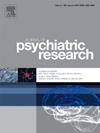Association between smartphone addiction and sedentary behaviour amongst children, adolescents and young adults: A Systematic Review and meta-analysis
IF 3.7
2区 医学
Q1 PSYCHIATRY
引用次数: 0
Abstract
Background
The rapid proliferation of smartphones has raised concerns about their impact on physical activity levels, particularly among younger demographics. While smartphones offer numerous benefits, there is growing evidence to suggest that excessive use may lead to sedentary behaviours, potentially impacting physical health adversely. Hence, this review was done to explore the association between smartphone addiction and reduced physical activity amongst children, adolescents and young adults.
Methods
This meta-analysis systematically reviewed ten studies involving 5195 participants. We employed a random-effects model with DerSimonian-Laird estimation for tau2 to calculate pooled odds ratios (ORs). Subgroup analyses were conducted based on geographical regions, risk of bias, and different measurement tools to assess the robustness and variability of the findings. Publication bias was assessed using funnel plots, Egger's test, and the trim-and-fill method.
Results
The analysis revealed a significant association between smartphone addiction and reduced physical activity, with a pooled OR of 2.19 (95% CI: 1.34 to 3.57, p = 0.002). Notably, subgroup analyses demonstrated a stronger association in studies from the Middle-Eastern region (OR = 4.75; p = 0.026) and among studies employing alternative standardized scales (OR = 3.32; p = 0.044). Sensitivity analyses confirmed the robustness of these findings, and although potential publication bias was detected, it did not materially affect the overall estimates.
Conclusions
Smartphone addiction is significantly linked with reduced physical activity among younger populations, underscoring the need for targeted public health interventions and longitudinal studies to elucidate causal mechanisms. These findings highlight that mitigating excessive smartphone use may be a critical component in promoting active lifestyles.
求助全文
约1分钟内获得全文
求助全文
来源期刊

Journal of psychiatric research
医学-精神病学
CiteScore
7.30
自引率
2.10%
发文量
622
审稿时长
130 days
期刊介绍:
Founded in 1961 to report on the latest work in psychiatry and cognate disciplines, the Journal of Psychiatric Research is dedicated to innovative and timely studies of four important areas of research:
(1) clinical studies of all disciplines relating to psychiatric illness, as well as normal human behaviour, including biochemical, physiological, genetic, environmental, social, psychological and epidemiological factors;
(2) basic studies pertaining to psychiatry in such fields as neuropsychopharmacology, neuroendocrinology, electrophysiology, genetics, experimental psychology and epidemiology;
(3) the growing application of clinical laboratory techniques in psychiatry, including imagery and spectroscopy of the brain, molecular biology and computer sciences;
 求助内容:
求助内容: 应助结果提醒方式:
应助结果提醒方式:


